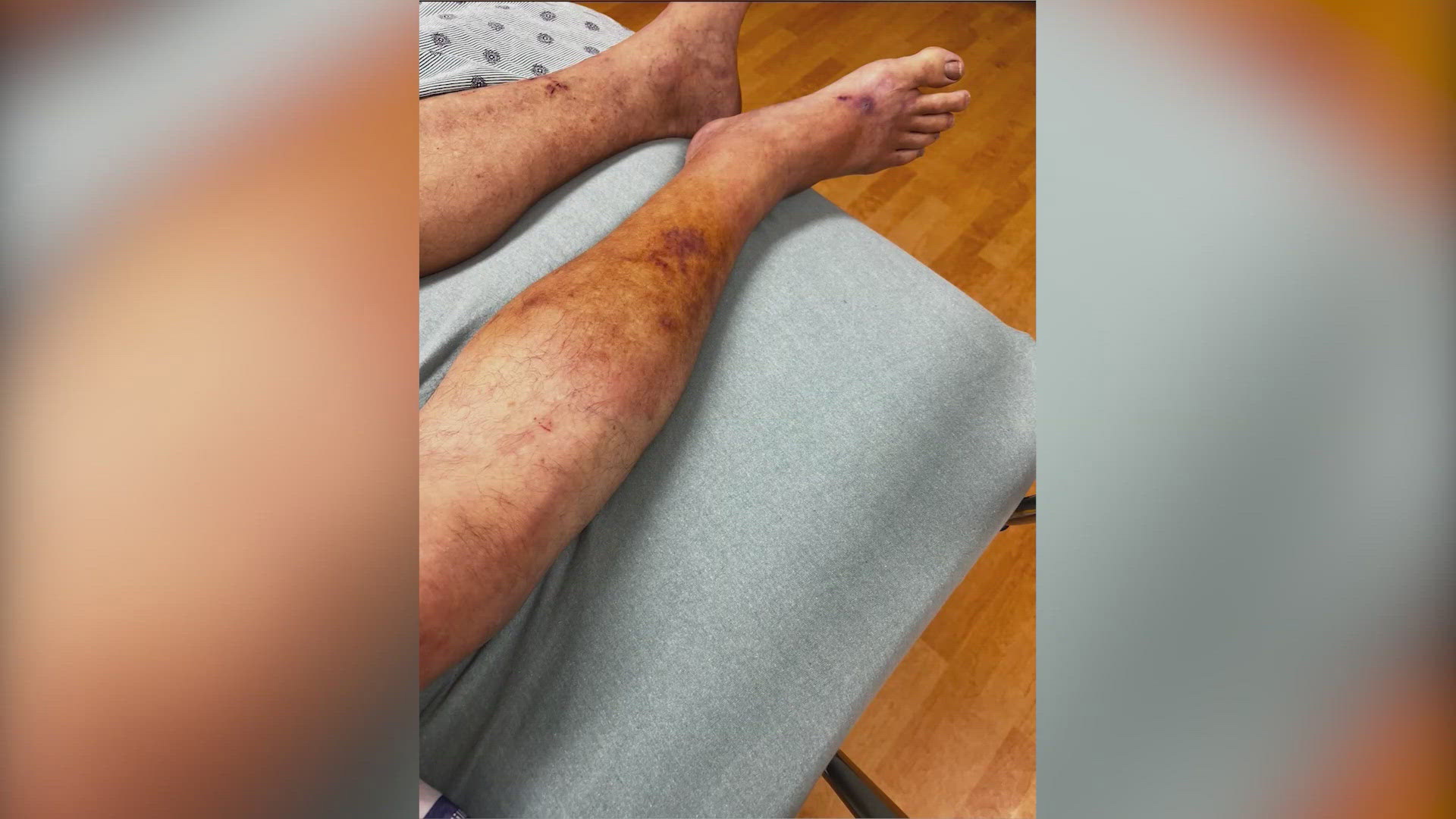PEARLAND, Texas — Researchers believe they've developed a potential drug that could treat the bacterial infections that cause the sometimes deadly flesh-eating bacteria.
The scientists at Washington University School of Medicine in St. Louis are studying a novel compound they say effectively clears bacterial infections in mice, including the Vibrio bacteria blamed for the recent death of a Freeport fisherman.
Brandy Pendergraft, of Pearland, said her dad, 66-year-old father, Randy Bunch, was fishing and crabbing in shallow water without his wading boots earlier this summer. He hadn't even noticed the tiny scrape on his foot but that's all it took for the Vibrio to invade his body.
Pendergraft said a couple of days later, Bunch was in pain, had a 104-degree fever and was lethargic and disoriented.
Within days, he was on a ventilator in the ICU but Pendergraft said doctors in the Texas Medical Center couldn't figure out what was wrong with him. She's the one who noticed the blisters on her dad's leg.
“I saw his foot and was like, ‘Oh, gosh. Could this be the flesh-eating bacteria? The Vibrio?'” Pendergraft said. “The blisters were taking over his whole body. It was spreading. Just like a fire.”
Bunch died less than one week after he went fishing.
Pendergraft wants more to be done to caution those who get into the water.
“You don’t see a lot of signs posted,” Pendergraft said. “You might see a few here and there but it’s not as prevalent as it should be. I want more awareness for people who aren’t from here, who vacation here, yes we want the tourists and we want people to enjoy it but as a state we have to be doing more, for our locals too.”
Galveston County health officials warn of rise in Vibrio infections
Earlier this month, the Galveston County Health District warned about an increase in Vibrio infections. At that time, GCHD said there were 11 reported cases, eight from visitors and three local residents.
Last year, there were only two cases.
"When the weather gets hot and the water gets hot, and then when the rains come and the salinity of the bay and, adjacent ocean decreases a little bit, that's perfect conditions for this bacteria to grow," Dr. Philip Keiser, with GCHD, said.
The bacteria can cause two types of infections.
"One is that it can cause problems from people eating raw oysters, primarily, but raw seafood, and typically people get nausea, vomiting, diarrhea, abdominal pain," Keiser said.
The second infection, like the one that killed Bunch, affects the skin.
"That is where individuals may have a cut or a sore spot that gets very red -- blisters may develop. They may get pus coming out of it," Keiser said.
Potential drug could treat other dangerous infections, researchers say
The St. Louis researchers say the potential drug could be the first in a new class of antibiotics to treat other drug-resistant infections, including staph and toxic shock syndrome.
“Bacterial infections of every type are an important health problem, and they are increasingly becoming multidrug-resistant and thus harder to treat,” Scott Hultgren, PhD explained.
When tested in mice infected with the type of bacteria blamed for half a million deaths worldwide, the researchers say their compound appeared to reduce the virulence of the bacteria and speed up postinfection healing of the damaged areas of the skin.
The drug still needs to be tested in humans.

